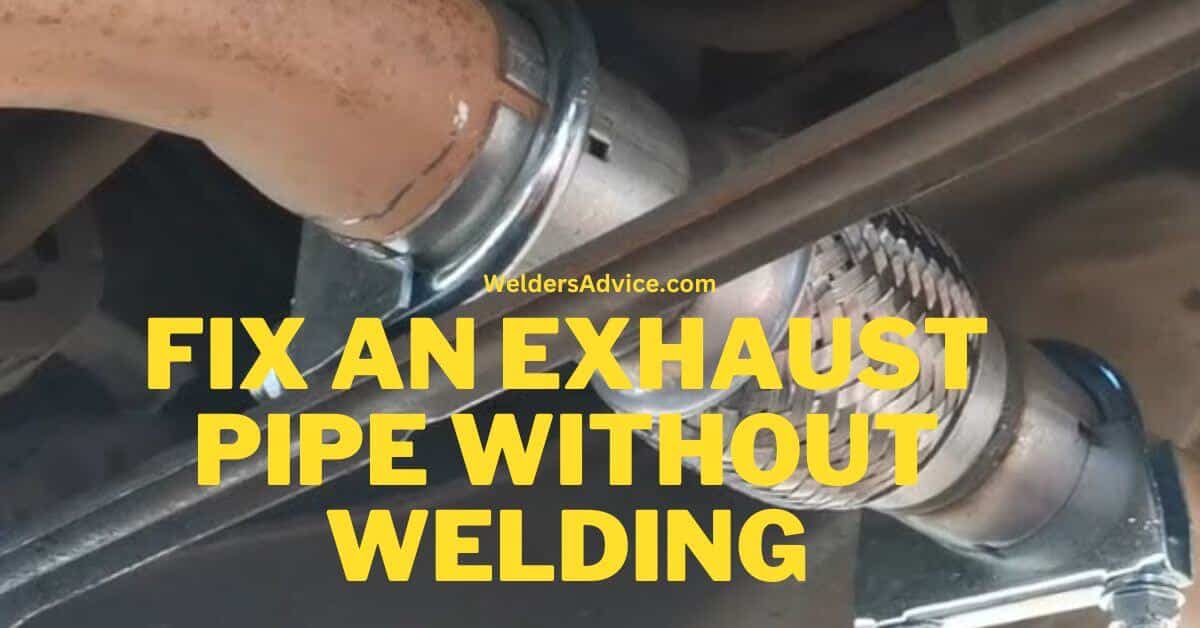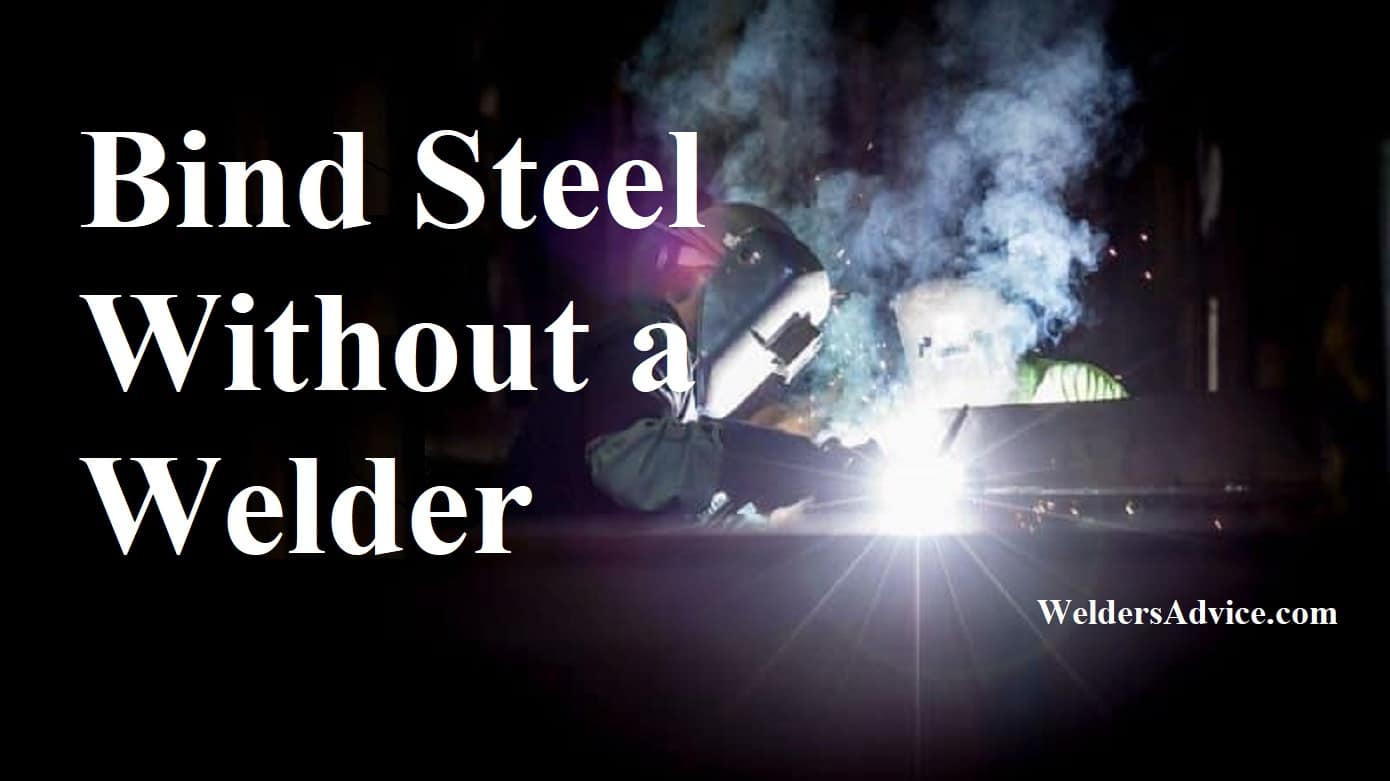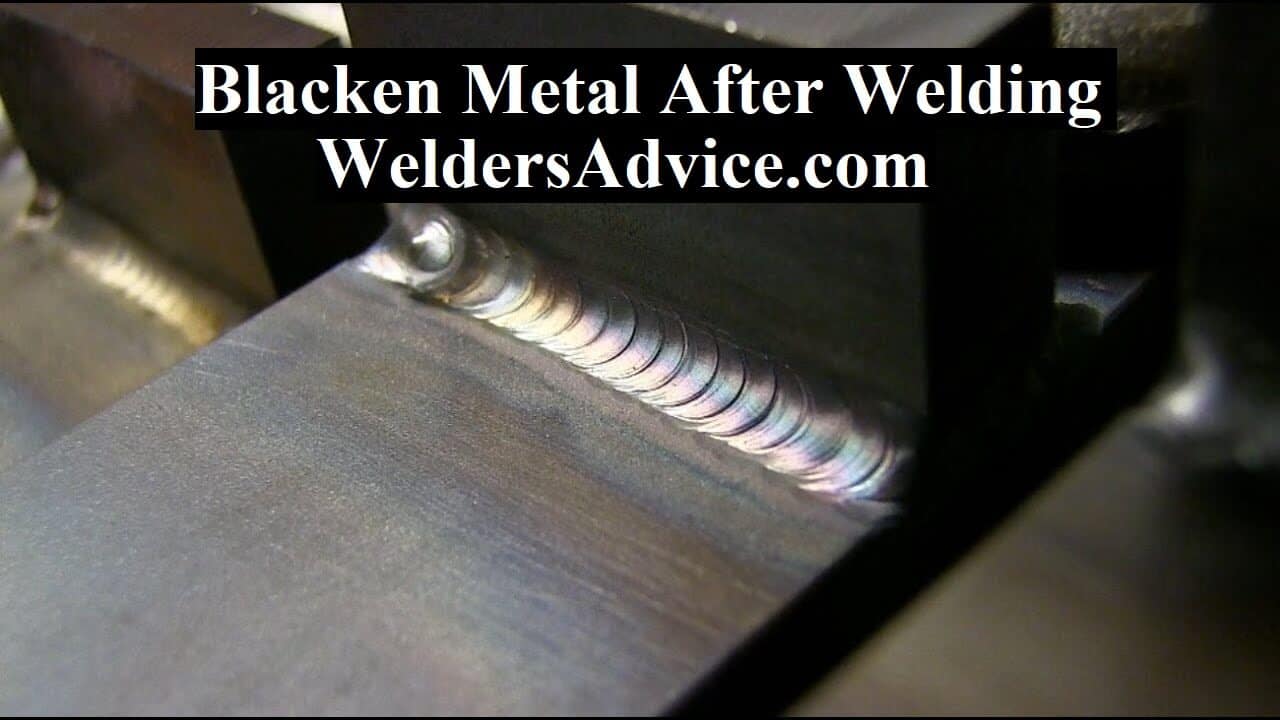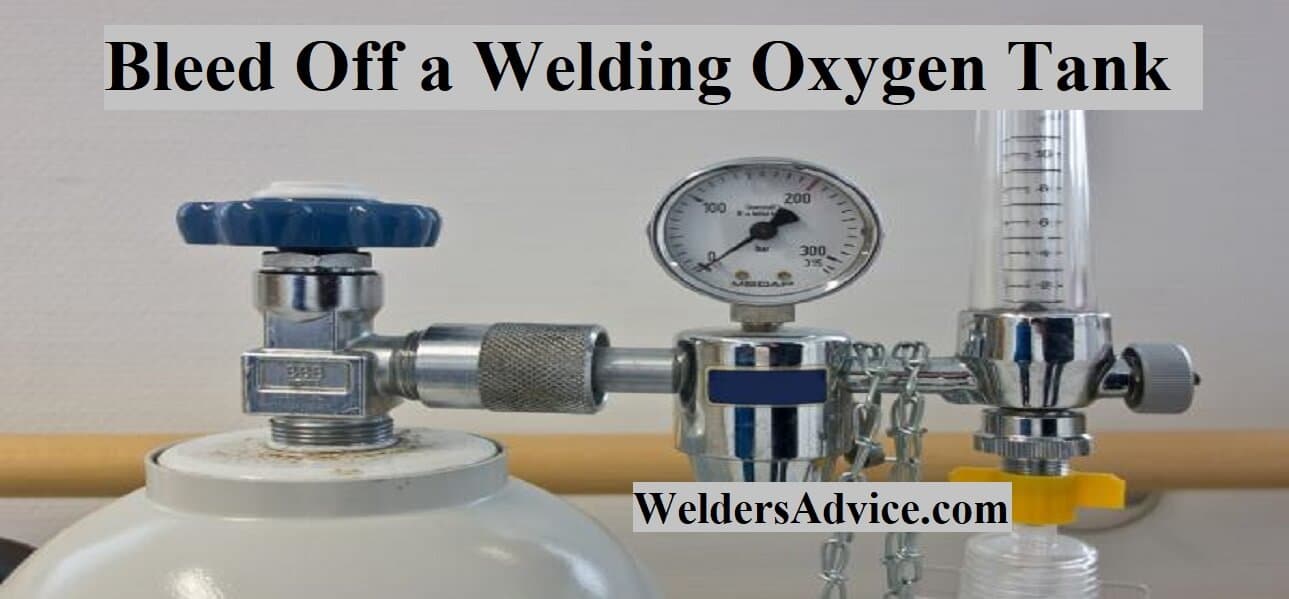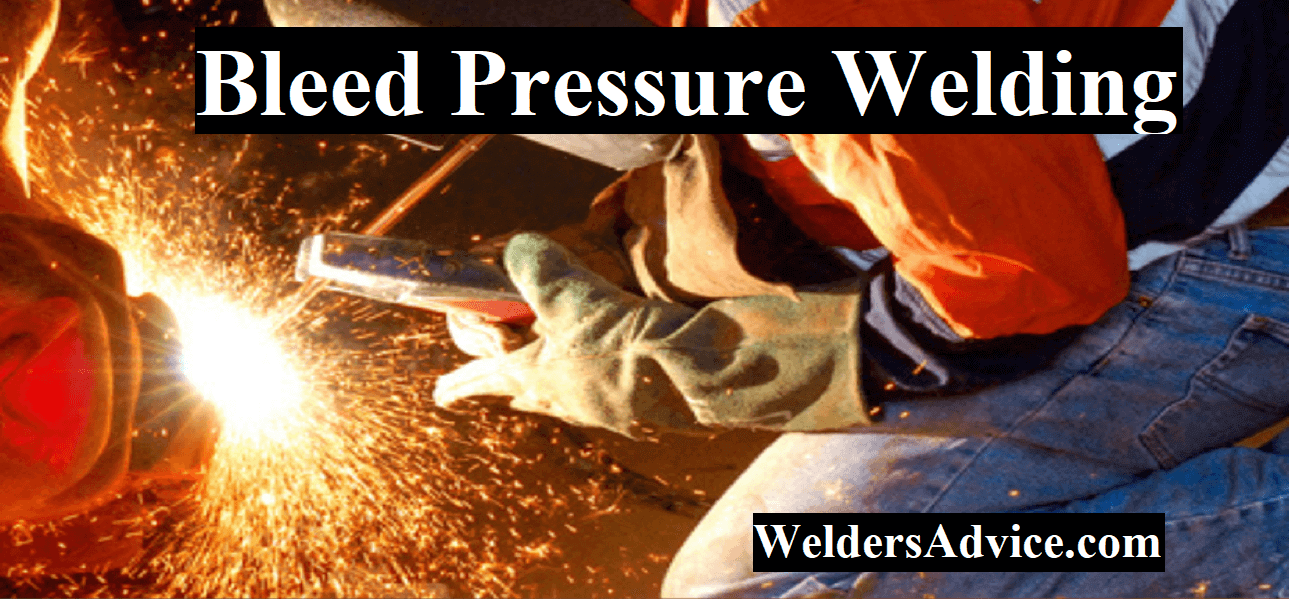As a professional welder, I understand the importance of a well-functioning exhaust system for any vehicle. However, sometimes an exhaust pipe can become damaged or even develop a crack. Which can lead to leaks and affect the performance of the vehicle. Welding is one solution to fix an exhaust pipe. But not everyone has access to a welder or the necessary welding skills.
In this article, I will guide you through some alternative methods to fix an exhaust pipe without welding. These methods are easy to implement and require only a few basic tools. With these techniques, you can save time and money by fixing your exhaust pipe yourself and getting your vehicle back on the road in no time. So let’s get started!
- Steps To Fix An Exhaust Pipe Without Welding
- How Do I Temporarily Fix My Exhaust Pipe?
- What Can I Use to Fix My Exhaust Pipe?
- Can I Use Aluminum Foil on My Exhaust?
- Does Jb Weld Work on Exhaust?
- Muffler Pipe Repair Sleeve
- Exhaust Pipe Repair Kit
- Exhaust Pipe Repair Tape
- Exhaust Flex Pipe Quick Fix
- Exhaust Repair Putty
- How to Connect Two Exhaust Pipes Without Welding
- Exhaust Pipe Connector Sleeve Joiner
- The exhaust Pipe Broke off the Muffler
- Final Thoughts
Steps To Fix An Exhaust Pipe Without Welding
- Step 1: Clean the Exhaust Pipe – Use a wire brush to remove any corrosion or dirt from the exhaust pipe. Make sure to wear protective gloves and eye protection while cleaning
- Step 2: Inspect the Leak – Visually inspect where the leak is coming from in order to determine how best to fix it. If there is a hole, use a sealant that can be applied with an applicator gun or similar tool. If there are loose joints, use clamps or bolts to secure them tightly together
- Step 3: Apply Sealant – After inspecting the leak, apply either a liquid sealant or a rubberized patch. (depending on what type of material your exhaust system is made out of) over the area that needs repair. Allow for time for this product to dry before moving on to
- Step 4: Secure Joints – For any loose connections between pipes, secure them using clamps and/or bolts. So they stay firmly connected without being able to move around freely when driving your vehicle again
- Step 5: Test Out Your Fix- Once everything has been secured and tightened up properly, start up your engine and take it for a test drive around town in order ensure that everything is working correctly after fixing your exhaust pipe without welding!
How Do I Temporarily Fix My Exhaust Pipe?
If you find yourself with a broken exhaust pipe, it can be quite frustrating. But don’t worry – there are ways to temporarily fix the problem until you can get it fixed properly. The first thing to do is assess how much damage has been done to your exhaust pipe.
If it’s only a small hole or cracks, then you may be able to patch the area up using an appropriate adhesive such as epoxy resin or silicone sealant. Make sure that whatever product you use is designed for use on vehicles. And will not cause any further damage when exposed to high temperatures produced by your engine. Once applied and allowed to dry according to manufacturer instructions. This should help keep fumes in check until you’re able to take your car into a garage for proper repair work.
However, if the issue is more serious than just a minor crack or hole. Then you’ll need something stronger such as steel clamps which can be used around the damaged section of pipe in order to hold it together until replacement parts become available. Whatever solution you choose make sure that safety comes first. Drive cautiously and ensure that noxious fumes aren’t entering the cabin of your vehicle before attempting any form of temporary repair work!
What Can I Use to Fix My Exhaust Pipe?
If you’re looking for a way to fix your exhaust pipe, there are several options available. Depending on the severity of the problem and the type of vehicle you have. One of these solutions might be best for you. For minor problems such as small holes or cracks in the exhaust pipe, it can often be patched with some kind of automotive sealant or epoxy designed specifically for use with metal pipes.
It is important to make sure that any product used is approved by your vehicle manufacturer before applying it to your car’s exhaust system. Additionally, if the leak is more serious than just a crack or hole, you may need to replace part or all of the entire pipe instead. This replacement process will likely require removing parts of your engine. and replacing them with new ones so this should only be done by an experienced professional mechanic who has experience working with vehicles like yours.
Can I Use Aluminum Foil on My Exhaust?
The short answer to this question is no, you should not use aluminum foil on your exhaust. Aluminum foil is a thin metal sheet that can easily melt or burn when exposed to high temperatures, and the extreme heat generated by an engine exhaust system could cause it to ignite or even release toxic fumes into the air. Additionally, aluminum foil can clog up your exhaust pipe and reduce airflow, resulting in reduced performance and decreased fuel efficiency.
You should instead opt for an approved thermal wrap designed specifically for car exhaust systems. Not only will these wraps protect against corrosion caused by heat up to 1,800°F (982°C), but they also help keep underhood temperatures lower which can improve power output and fuel economy as well as protect other components from excessive heat damage.
Also Read: Best Flux Core Welders
Does Jb Weld Work on Exhaust?
JB Weld is an incredibly powerful, two-part epoxy adhesive that is renowned for its strength and durability. It can be used to bond together almost any two surfaces, including metal, plastic, ceramic, and more. This makes it a popular choice for applications such as automotive repairs and home improvement projects.
One of the most common questions people have about JB Weld is whether or not it works on exhaust systems. The answer is yes – JB Weld can be used to repair cracks and small holes in exhaust pipes without the need for welding equipment or additional parts. However, there are some important considerations to keep in mind when using JB Weld on an exhaust pipe: first of all, it should only be used on smaller repairs – larger breaks may require professional welding; second of all, the area needs to be fully prepped before applying the epoxy; thirdly, you must allow sufficient time for proper curing (typically 24 hours) so that your repair will last long-term; finally, make sure that you select a product specifically designed for use with high temperatures like JB HighHeat or Exhaust Repair Kit which are rated up to 500°F/260°C intermittent heat exposure.
With these precautions taken into account, you can trust your repaired exhaust pipe will stay strong and reliable with no worries about further damage!
Also Read: Best Welding Caps
Muffler Pipe Repair Sleeve
The muffler Pipe Repair Sleeve is an ideal solution for repairing damaged exhaust systems. It is made of a durable and high-temperature-resistant material that can be used to repair almost any type of muffler pipe. The sleeve easily slips over the damaged area, and then clamps or welds in place for a secure hold.
This makes it quick and easy to fix small holes or cracks in your muffler pipes without having to replace the entire exhaust system. Muffler Pipe Repair Sleeves are available in different sizes, making them suitable for all types of vehicles.
Exhaust Pipe Repair Kit
Exhaust pipe repair kits are designed to help repair and replace corroded or damaged pipes quickly, easily, and economically. The kit typically includes a patch of metal to fit over the hole or crack in the exhaust pipe, as well as a sealant that will keep it securely in place. A quality repair kit should also include detailed instructions on how to properly install the patch for optimal performance.
With an exhaust pipe repair kit, you can save time and money by avoiding costly repairs or replacements.
Exhaust Pipe Repair Tape
Exhaust Pipe Repair Tape is an effective way to repair holes and cracks in your exhaust system. It’s made from a high-strength, heat-resistant fabric that can withstand temperatures of up to 400°F. This makes it ideal for repairing automotive exhaust pipes and mufflers without having to replace the entire pipe or muffler.
The adhesive backing allows you to quickly and easily apply the tape, while its stretchability ensures a secure fit on curved surfaces. Additionally, Exhaust Pipe Repair Tape won’t corrode or discolor over time, so it provides a lasting solution for your repair needs.
Exhaust Flex Pipe Quick Fix
Exhaust flex pipes are a great way to quickly and easily repair an exhaust system. They are designed to absorb vibration, reduce noise, and provide flexibility in the exhaust system. Flex pipes are typically made of stainless steel or aluminized steel with an inner liner for durability and corrosion resistance.
Installation is simple and requires only basic hand tools – no welding or special equipment is needed! With a quick fix installation of an exhaust flex pipe, your car will be back on the road in no time!
Exhaust Repair Putty
Exhaust Repair Putty is a quick and easy solution for repairing small exhaust leaks in cars, trucks, boats, and other vehicles. This putty seals the leaking area without welding or epoxy and can withstand up to 500°F (260°C). It is suitable for use on aluminum, steel, stainless steel, and cast iron surfaces.
Additionally, it has excellent adhesion qualities which make it ideal for quickly patching holes in exhaust systems.
How to Connect Two Exhaust Pipes Without Welding
If you need to connect two exhaust pipes without welding, there are a few different ways you can do it. One option is to use an Exhaust Clamp, which will securely hold the two pipes together so they don’t come apart. Another method is to use an Exhaust Flange Adapter Kit, which includes a gasket and bolts that attach the two pieces of pipe together.
Additionally, depending on the size of your exhaust pipes, you may also be able to simply slide one pipe into another using a rubber hose adapter or sleeve clamp.
Exhaust Pipe Connector Sleeve Joiner
Exhaust pipe connector sleeve joiners are an essential part of any exhaust system and serve to connect two pipes together. They come in a variety of sizes, materials, and designs to fit the specific needs of your vehicle’s exhaust system. These connectors provide a secure seal between two pipes so you can rest assured that there won’t be any leaks or other issues with your exhaust system.
With proper installation and maintenance, these joiners can last for years without needing to be replaced.
The exhaust Pipe Broke off the Muffler
If your exhaust pipe has broken off of the muffler, it’s important to get it fixed right away. The exhaust system plays an integral part in the overall performance and safety of your vehicle. When the connection between the exhaust pipe and muffler is compromised, there can be a significant increase in noise coming from your engine as well as increased emissions that could potentially contaminate the air around you.
It’s best not to wait until it gets worse before seeking out a qualified mechanic to repair or replace both parts.
Final Thoughts
This blog post has outlined several methods for repairing an exhaust pipe without welding. Depending on the severity of the damage, some repairs can be done with simple items such as clamps and sealants. Other more serious damages may require replacement parts or professional assistance.
Whatever the case may be, it is important to take action quickly to repair any exhaust pipe damage in order to avoid further complications down the line.

